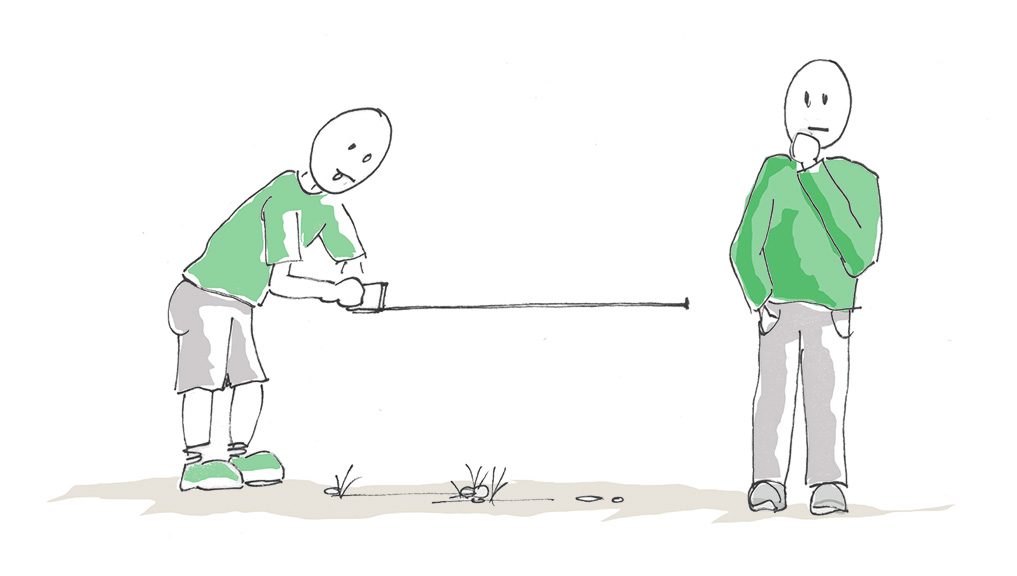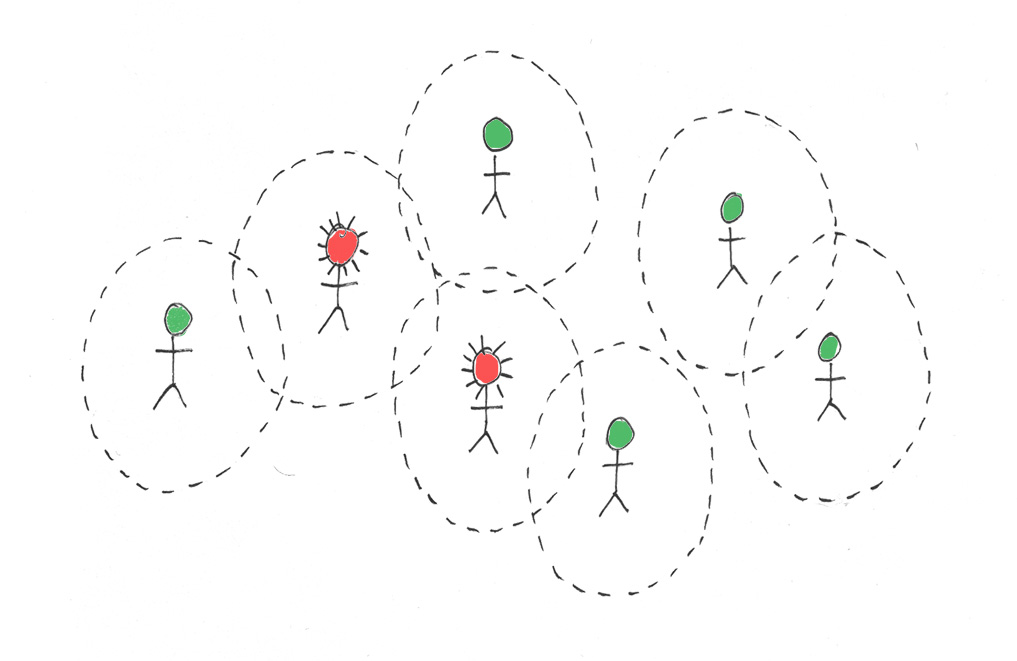Introducing physical distance between people (for example one meter minimum when crossing each other in the street or when we queue in front of shops) is indeed an interesting idea… but it’s not always easy to implement. Let’s take a closer look.

In an ideal world, if the minimum distance is respected at all times by everyone, and the spread of the virus is as simple as the one modelled in the response to question 1, then yes, this model would work very well (Simulation 2a: Let’s keep our distance!).
However simple the model we are building, when we examine the spread of the virus, two factors make things a little more complicated.
Firstly, keeping the minimum distance of one meter between individuals is not always physically possible.

Let’s see what happens when we increase the number of people present at the same time at the same place (Simulation 2b: The crowd).
Let’s admit, this is not the best way to go shopping…
To summarise: introducing distance between people is a good way of slowing down the spread of the virus, provided of course that the density of people is not too high. Besides, this only works if everyone is able to keep their distance. Is this really possible though? What about those who have to work in close proximity with medical patients and/or the general public?
Let us now assume that a part of the population is not able to systematically abide by the principle of social distancing. What would that imply?
The easiest way is to test this scenario within our simulation. Here is what would happen if 10% only of people (including the first infected person) cannot respect the principle of social distancing (Simulation 2c: The weak link).
The spread of the virus is not controlled anymore, but its progression is still considerably less, which is in itself good news. We observe however that the small minority of people who do not (or cannot) respect social distancing (represented as squares) are the first to get infected (the grey curve) and become, unfortunately, the virus’ allies.
This is as simple as that.
Reminder: the models developed on this website are for educational purposes only. They are a lot simpler than models built and deployed by other teams working on COVID-19. They are not substitutes for these reference models and cannot be used to make diagnoses or forecasts. Our goal instead is to raise awareness about this epidemic and its drivers.